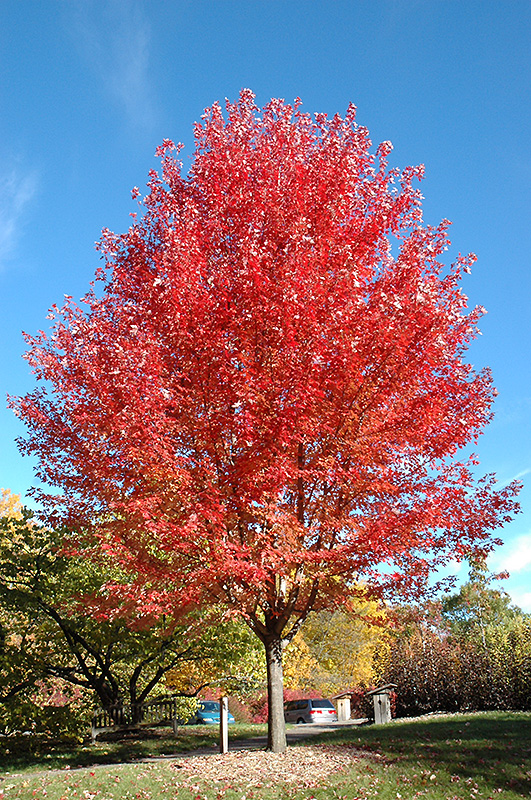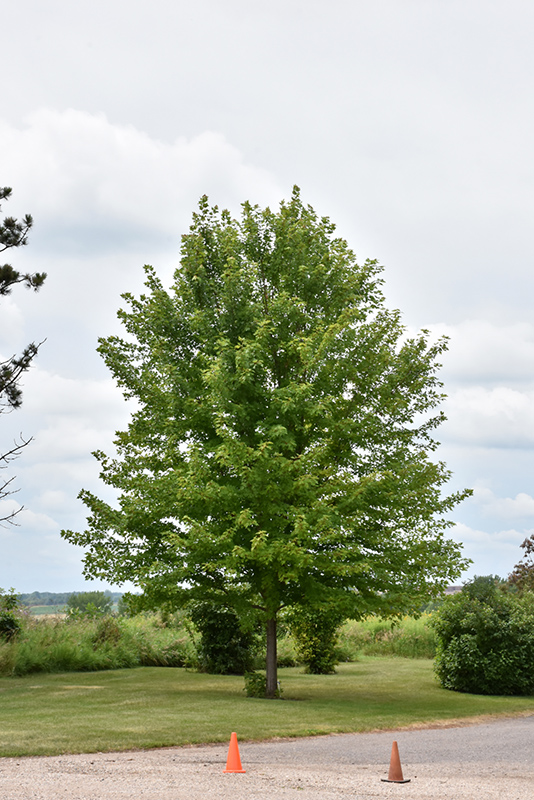Autumn Blaze Maple
Acer x freemanii 'Jeffersred'
Height: 50 feet
Spread: 40 feet
Sunlight:
![]()
Hardiness Zone: 3b
Description:
A popular hybrid of the silver and red maples combining the best attributes of both; stunning red fall colors, excellent habit of growth, very fast growing; Recommend using an iron and magnesium fertilizer every year.
Ornamental Features
Autumn Blaze Maple features showy clusters of red flowers along the branches in early spring before the leaves. It has green deciduous foliage. The lobed leaves turn outstanding shades of orange and in the fall. The furrowed gray bark and brick red branches add an interesting dimension to the landscape.
Landscape Attributes
Autumn Blaze Maple is a deciduous tree with an upright spreading habit of growth. Its average texture blends into the landscape, but can be balanced by one or two finer or coarser trees or shrubs for an effective composition.
This is a relatively low maintenance tree, and is best pruned in late winter once the threat of extreme cold has passed. It is a good choice for attracting birds to your yard, but is not particularly attractive to deer who tend to leave it alone in favor of tastier treats. It has no significant negative characteristics.
Autumn Blaze Maple is recommended for the following landscape applications;
- Accent
- Shade
Planting & Growing
Autumn Blaze Maple will grow to be about 50 feet tall at maturity, with a spread of 40 feet. It has a high canopy of foliage that sits well above the ground, and should not be planted underneath power lines. As it matures, the lower branches of this tree can be strategically removed to create a high enough canopy to support unobstructed human traffic underneath. It grows at a fast rate, and under ideal conditions can be expected to live for 80 years or more.
This tree should only be grown in full sunlight. It does best in average conditions that are neither too wet nor too dry. It is not particular as to soil type, but has a definite preference for acidic soils, and is subject to chlorosis (yellowing) of the foliage in alkaline soils. It is highly tolerant of urban pollution and will even thrive in inner city environments. Consider applying a thick mulch around the root zone in winter to protect it in exposed locations or colder microclimates. This particular variety is an interspecific hybrid.


